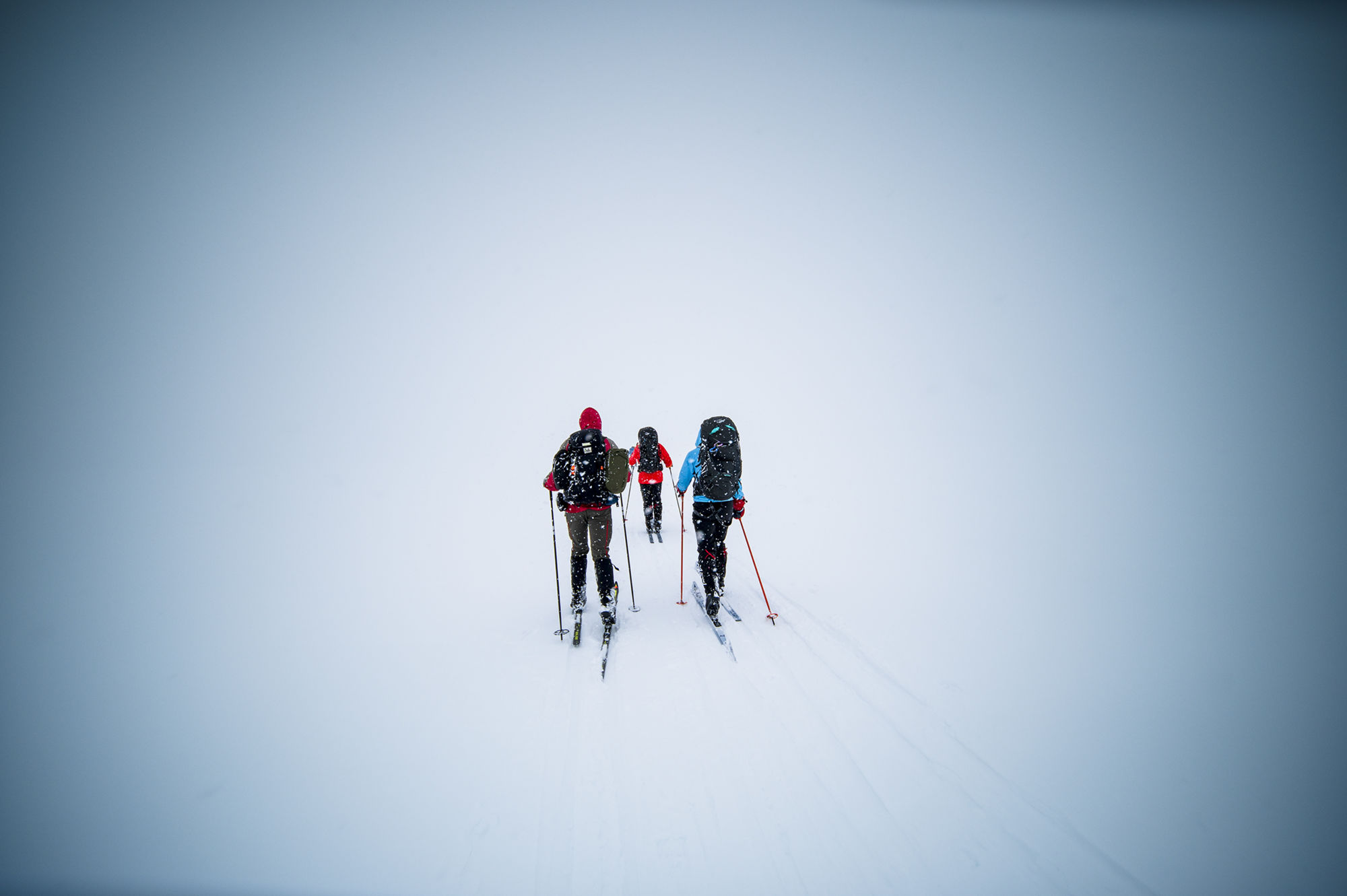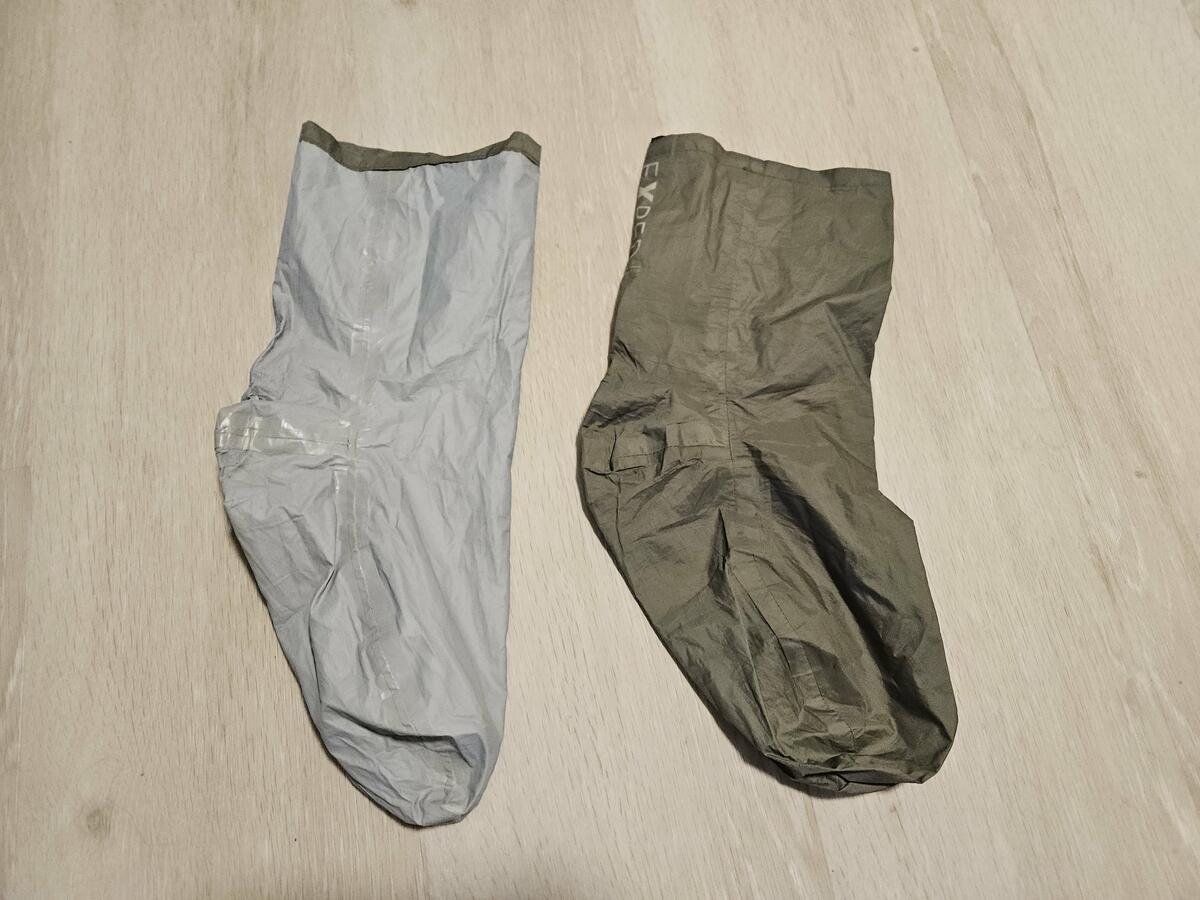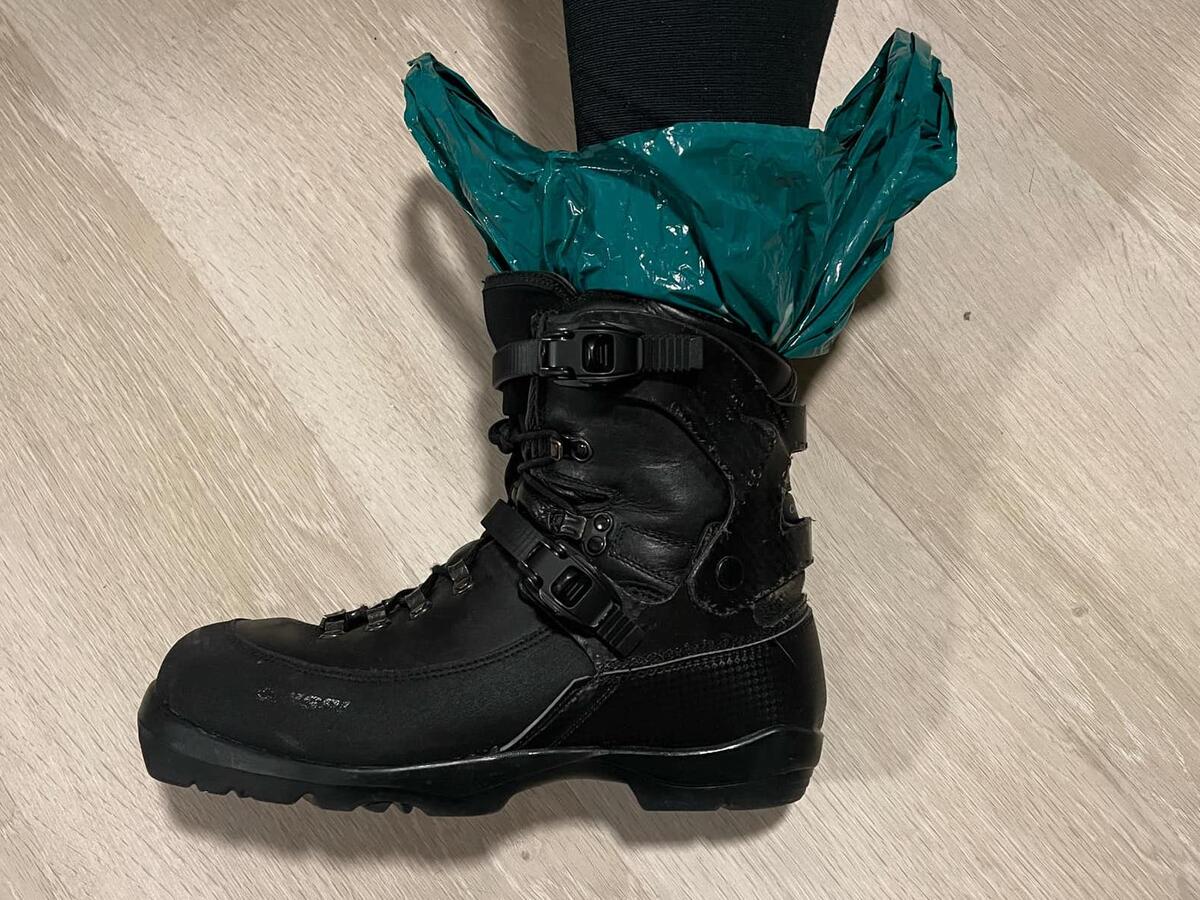Traditionally, vapor barrier socks have been used during long, cold ski expeditions, but there’s no reason why they can’t also be a great choice for shorter tours. Here’s more information on why a vapor barrier in your ski boots might be a good idea!
As long as you're on multi-day trips, sweating on your feet, and don’t have the opportunity to dry your boots along the way, it can be very beneficial to use a vapor barrier in your boots, even if it’s not freezing cold. The vapor barrier prevents sweat from your feet from getting into your socks and boots, keeping them dry (as long as they don’t get wet from the outside). This way, you also avoid having your boots freeze overnight when camping in a tent, and you won’t have to thaw them out while walking the next morning!
Start with thin wool socks directly against your feet, then vapor barrier socks/plastic bags, followed by thicker wool socks on top. Remember to buy boots that are big enough! Bring socks and plastic bags with you to the store when you try them on. Here you can read more about choosing Nordic backcountry ski boots.
When you arrive at camp, remember to remove the vapor barrier socks and change into dry camp socks. You’ll get wet inside the vapor barrier, which can make you cold quickly if you’re staying still. It’s also a good idea to air out and dry your feet thoroughly before putting on dry socks and boots/camp booties. Hang the wet socks in the tent, along with the vapor barrier socks, and put them on again the next day.
Do you struggle with blisters? Many find that using a vapor barrier helps, as it reduces friction between your feet, socks, and boots.


